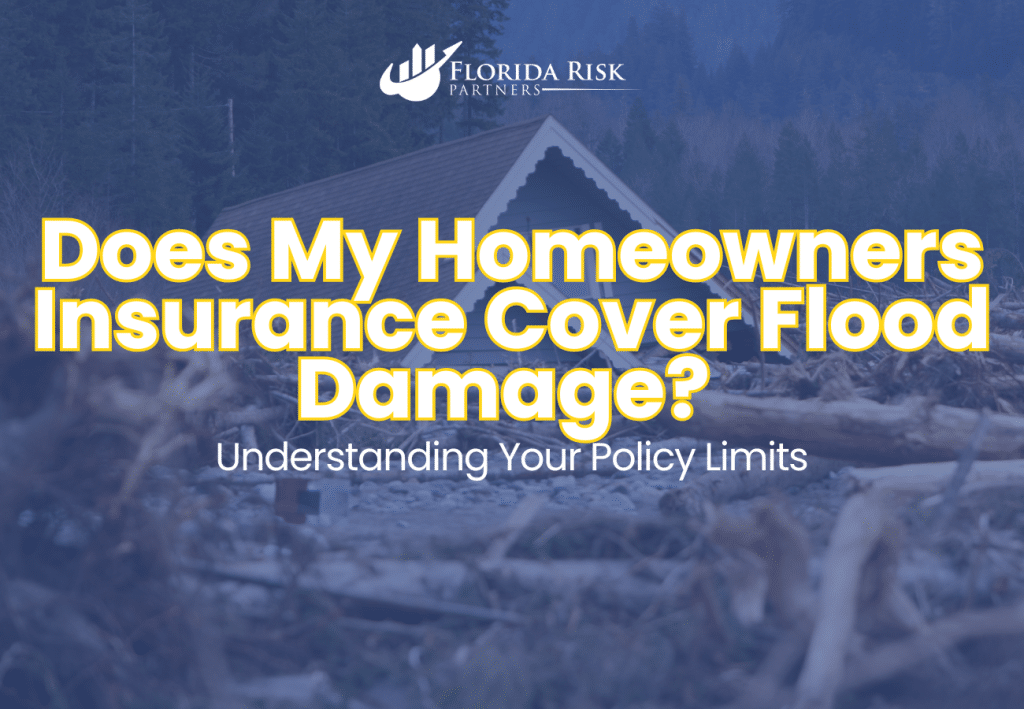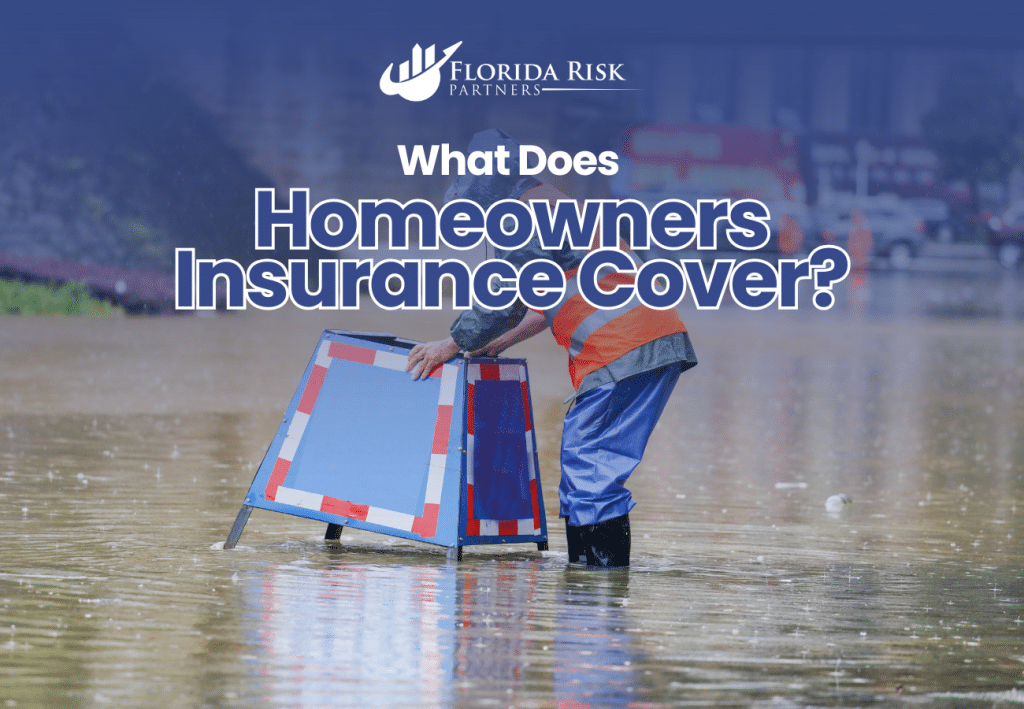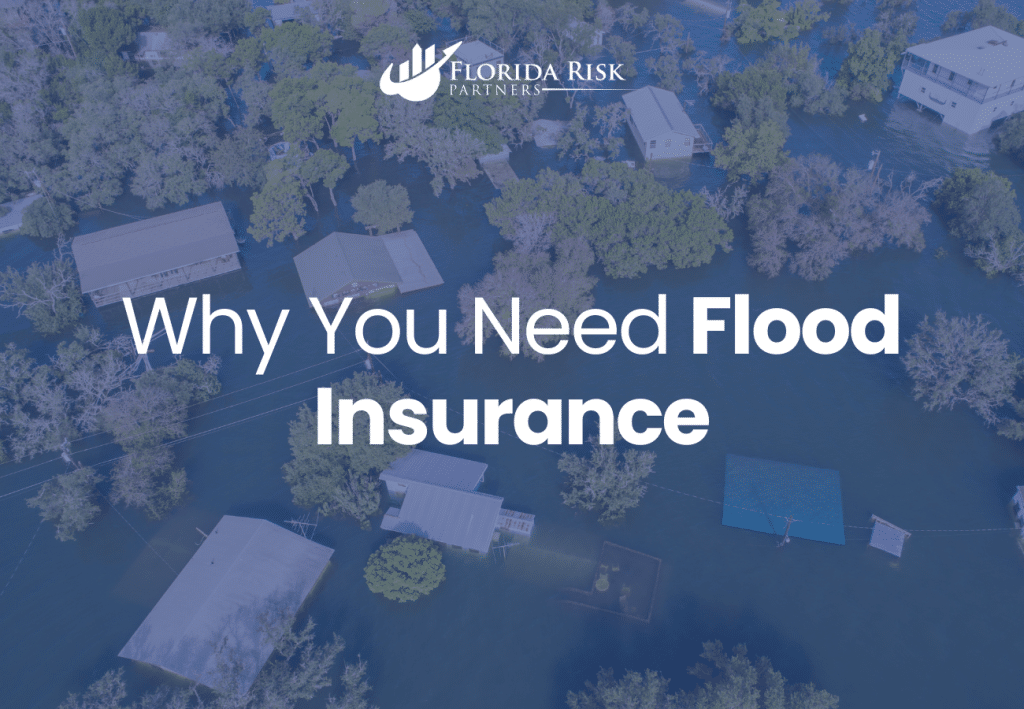-
Main Office: 1434 E. Bloomingdale Ave Valrico, FL 33596-6110
-
Phone: (888) 601-6660
-
Email: info@floridariskpartners.com

When it comes to protecting your home, it’s essential to understand exactly what your homeowners insurance policy covers. Many homeowners mistakenly believe that their standard insurance will cover all types of damage, including flooding. Unfortunately, this misconception can lead to significant financial hardship when flooding strikes, as flood damage is typically not covered by standard homeowners insurance policies.
In this blog post, we’ll clarify the limitations of homeowners insurance regarding flood damage, explore what flood insurance covers, and explain why securing a separate flood insurance policy is critical for protecting your property. This post is part of our Flood Insurance 101 series, designed to help you navigate the complexities of flood insurance and ensure that your home is properly protected.
Does Homeowners Insurance Cover Flood Damage?
The short answer is no—standard homeowners insurance does not cover flood damage. While your policy may protect you against various risks, such as fire, wind, hail, and theft, it typically excludes water damage caused by flooding.
Flooding can occur in numerous ways, including heavy rainfall, storm surges, or overflowing rivers. If floodwaters damage your home, you’ll need a separate flood insurance policy to cover the repair costs. Without flood insurance, you’ll be responsible for paying for the damage out of pocket, which can quickly become overwhelming. According to the Federal Emergency Management Agency (FEMA), just 1 inch of floodwater in your home can cause more than $25,000 in damage.
To ensure you’re covered for floods, you’ll need to purchase a separate flood insurance policy through FEMA’s National Flood Insurance Program (NFIP) or a private insurer. Learn more about flood insurance options here.
What Does Homeowners Insurance Cover?

While homeowners insurance won’t protect you from flood damage, it does offer valuable protection for other types of water damage, as well as a range of other risks. Here’s a breakdown of what’s typically covered under standard homeowners insurance:
- Water Damage (Non-Flood Related): Homeowners insurance may cover water damage caused by sudden and accidental events, such as a burst pipe or an overflowing washing machine. However, damage caused by gradual leaks or poor maintenance is usually excluded.
- Wind and Storm Damage: If your home is damaged by wind or hail, such as during a severe thunderstorm or hurricane, your homeowners insurance will generally cover the repairs. This can include damage to your roof, siding, or windows.
- Fire Damage: One of the core protections of homeowners insurance is coverage for fire damage. If your home is damaged or destroyed by fire, your policy will typically cover the cost to repair or rebuild your home.
- Theft and Vandalism: Homeowners insurance also covers damage caused by theft or vandalism. This includes both the cost to repair any damage to your home and the replacement of stolen items.
While these protections are important, it’s crucial to understand that flood damage is a separate risk that requires specialized coverage. Don’t assume your homeowners insurance will protect you from the financial impact of a flood—get a flood insurance quote here to secure the coverage you need.
What Does Flood Insurance Cover?
Flood insurance is specifically designed to cover damage caused by flooding, and it includes two types of coverage: building coverage and contents coverage.
- Building Coverage: This protects the structure of your home, including the foundation, walls, electrical and plumbing systems, and heating and cooling systems. It also covers permanently installed features, such as cabinets, flooring, and built-in appliances. FEMA’s National Flood Insurance Program (NFIP) offers up to $250,000 in building coverage for residential properties.
- Contents Coverage: This protects your personal belongings, such as furniture, electronics, clothing, and other valuables inside your home. The NFIP provides up to $100,000 in contents coverage for homeowners. For items like artwork or expensive electronics, you may need to purchase additional riders or explore private flood insurance options for higher coverage limits.
Both building and contents coverage are critical for ensuring that your home and belongings are protected in the event of a flood. Explore flood insurance coverage options here to learn more about how to protect your property.
Why You Need Flood Insurance
Even if you’re not in a high-risk flood zone, flood insurance is still a valuable investment. More than 20% of all flood insurance claims come from properties located outside of high-risk flood zones, meaning that even homes in moderate- to low-risk areas can experience flooding.
Additionally, changes in weather patterns, infrastructure development, or drainage systems can increase flood risks in areas that previously had little to no flood activity. For instance, a new construction project in your neighborhood could alter water flow, increasing the likelihood of flooding near your home.

The cost of flood insurance is often much lower than the cost of repairing flood damage. In low- to moderate-risk areas, premiums can be as low as $400 to $700 per year. Considering the potential cost of repairing or rebuilding your home after a flood, this is a small price to pay for peace of mind.
To understand your specific flood risk and get an estimate of your flood insurance premium, calculate your flood insurance cost using our online tool.
How to Buy Flood Insurance
If you’re ready to protect your home from the financial impact of flooding, the next step is purchasing a flood insurance policy. You have two main options: FEMA’s National Flood Insurance Program (NFIP) or private flood insurance.
- NFIP Flood Insurance: The NFIP provides standardized flood insurance policies for homeowners, renters, and businesses in participating communities. Coverage is capped at $250,000 for the structure of your home and $100,000 for personal belongings. NFIP policies are available through insurance agents, and premiums are based on factors such as your flood zone, property elevation, and coverage limits.
- Private Flood Insurance: Private insurers offer an alternative to NFIP policies, and they may provide higher coverage limits, additional coverage options, and more flexible pricing. If your home’s value exceeds the NFIP’s coverage limits, or if you want to customize your policy with features like replacement cost coverage for personal belongings, private flood insurance may be the better option for you.
Regardless of which option you choose, it’s important to act before flood season begins. Most flood insurance policies have a 30-day waiting period, so don’t wait until a storm is on the horizon to secure coverage.
Start your flood insurance purchase here and ensure your home is fully protected.
How to Check if You Need Flood Insurance
Even if flood insurance isn’t required by your lender, it’s worth checking your flood risk to determine whether you need coverage. FEMA’s Flood Map Service Center allows you to check your property’s flood zone and assess the likelihood of flooding in your area.
In high-risk areas, flood insurance is typically required by lenders. However, even in moderate- to low-risk areas, floods can happen. More than 40% of flood events occur outside of high-risk zones, which is why flood insurance is recommended for all homeowners.
You can check your flood zone online or speak with an insurance agent to get a better understanding of your flood risk and the cost of flood insurance for your property.
Conclusion: Protect Your Home with Flood Insurance
While homeowners insurance provides important coverage for risks like fire, theft, and wind damage, it does not cover flood damage. If you want full protection for your home, especially in the face of rising flood risks, a separate flood insurance policy is essential.
Whether you live in a high-risk flood zone or an area with a lower risk of flooding, purchasing flood insurance is a smart decision that can save you from financial disaster. Don’t leave your home unprotected—get your flood insurance quote now here and ensure you have the coverage you need before the next storm hits.
Call Us Or
Schedule an Appointment
Select an agent below to view our online calendars and select a day and time that works best for you or call us directly at 888-601-6660. When you use our online calendars, you will receive an email with more information.



